A shuttle bus picks up a group of people waiting in front of a sign that reads Little Plumeria Farms—“Little” being the surname of its founder, Jim Little, not a description of the plumerias or the farm itself. The bus takes them away from the iconic surf breaks and beachside shopping of Hale‘iwa Town on O‘ahu’s North Shore, excitement building as it drives through a private gate and climbs up a dusty dirt road caked in crimson clay. This is not the Hale‘iwa that visitors to Hawai‘i typically come to see, nor is it the Hale‘iwa that locals have come to know.

Since the farm’s founding in 1973, access to its 20 acres has been limited to those who maintain the trees and harvest the flowers for commercial sales. All this despite Jim being one the most famous frangipani growers in the world, known for unique hybrids that can fetch hundreds of dollars among collectors. But for the first time in its 50-year history, Little Plumeria Farms is opening its doors to the public, allowing visitors to view the world-renowned cultivars in person.
“It’s a special place for us,” says Jim’s son, Clark Little, a famed local surf photographer who manages the farm alongside his father and son, Dane. “But to bring people the joy and serenity this place brings us, it makes us feel good. People don’t understand it till they get here and see the ocean view.”

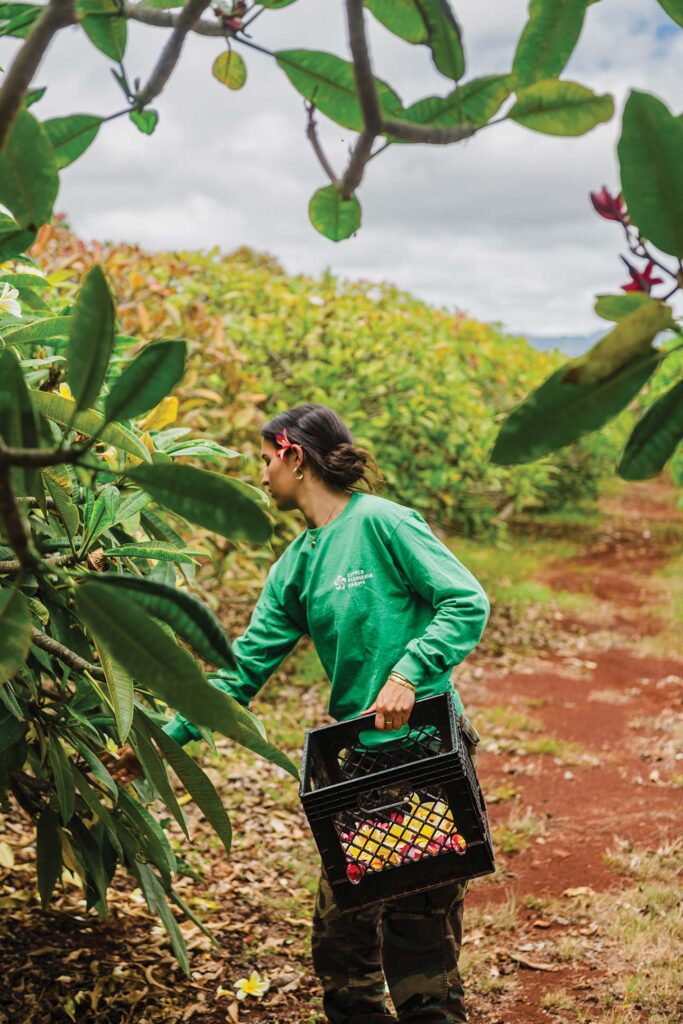
Indeed, if it weren’t for the deep blue ocean in the distance, it would look less like a tropical island and more like a vision of Mars after successful terraforming: red earth dotted with rows of trees as far as the eye can see, flanked by the rugged cliffs of the Wai‘anae Mountains. The sprawling farm is a testament to how successful Jim’s plumeria business has become, growing from a hobby into what is today a multigenerational, globally renowned operation.
The bus arrives at its destination. The group of 18 adults and two young children are brought to a shaded area between two distinct sections of countless full-grown plumeria trees: one for rare hybrids, another for free-picking. Each person is given a small paper bag to collect their complimentary blooms, and tour guides start passing around different varieties. The group becomes a collective chorus of “ooohs” and “aaahs” as they smell the blooms and drop them into their bags for safekeeping.
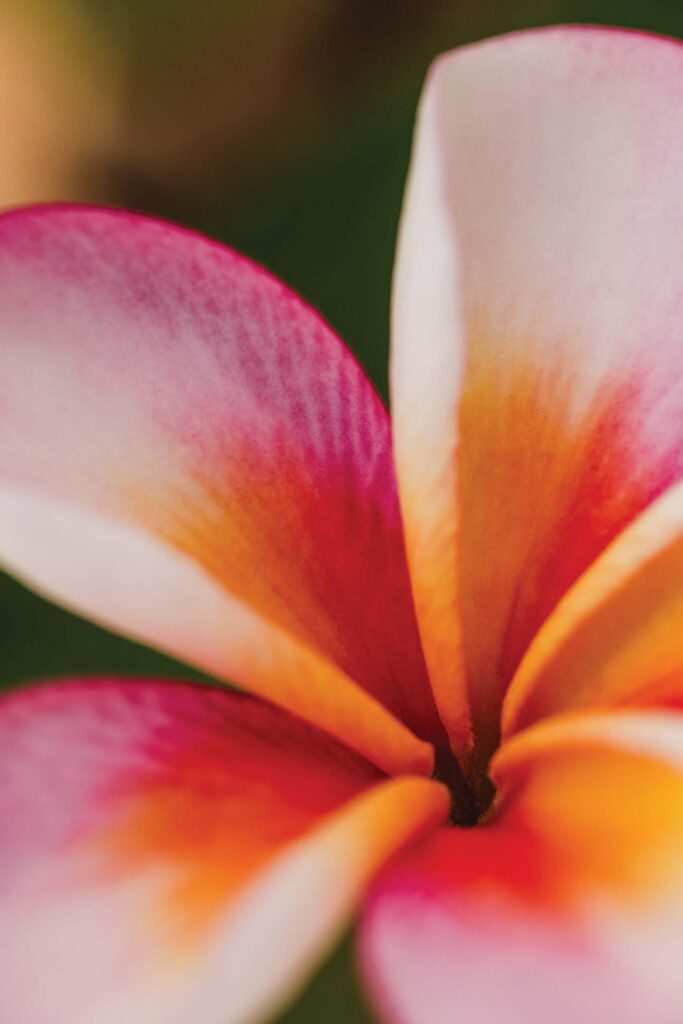
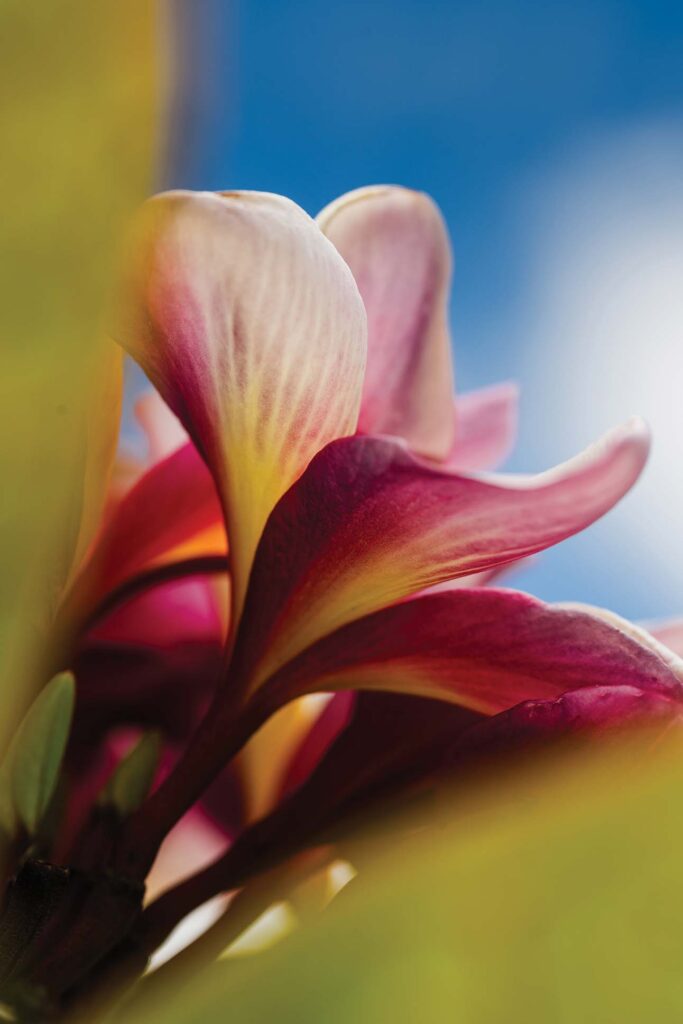
Dane proceeds to explain how they raise plumeria from seed pod to full bloom—a nearly four-year process in which trees don’t begin flowering until 12 months into their growth. The farm currently has about 1,000 trees in the ground, Dane explains, and another 3,000 in pots. As he wraps up the orientation, questions rise from the audience.
“Do they bloom all year long?” someone asks.
“No,” Dane says, “they go dormant around November and start to bloom around April.”
“Are plumerias native to Hawai‘i?”
“No, they originate from Latin America and the Caribbean, and they were brought to Hawai‘i in 1860.”
The second answer surprises the crowd, even though most of them are kama‘āina (Hawai‘i residents). Plumerias are commonly associated with Hawai‘i—the floral equivalent of hula dancing or surfing. Plumeria lei greet visitors and returning residents at local airports, adorn performers at the Merrie Monarch hula festival on Hawai‘i Island, and decorate downtown Honolulu’s famed King Kamehameha statue by the thousands on Kamehameha Day. In a way, plumerias are representative of many local people: brought to Hawai‘i from elsewhere and woven into the fabric of modern life in the islands.
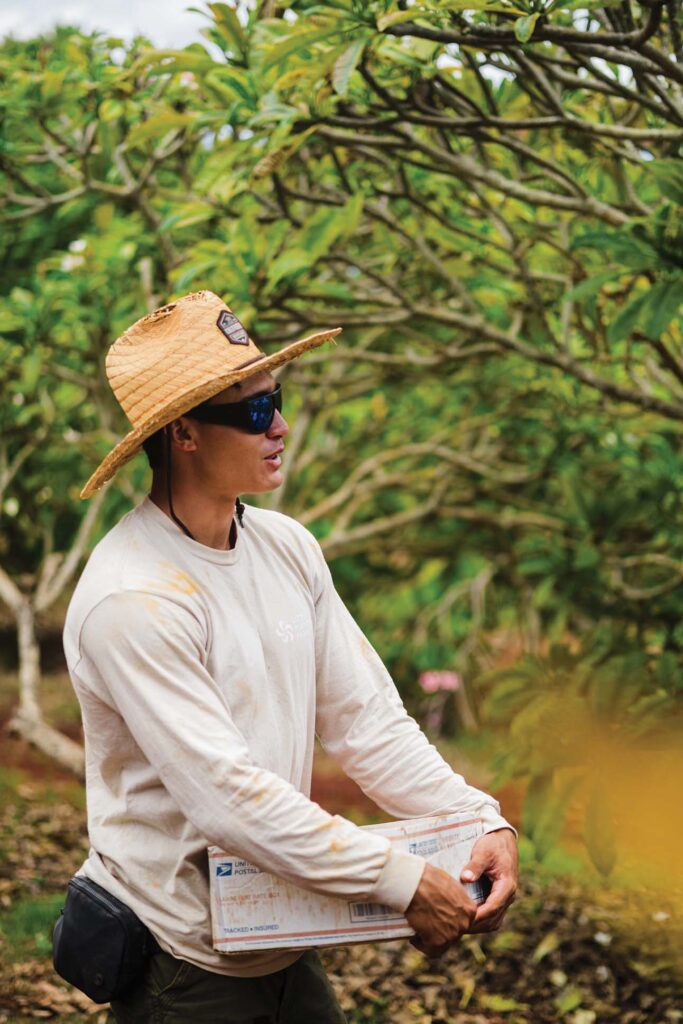
The beauty of this intermingling is particularly evident on the first part of the tour, when Dane and the other guides take the group through the rare and hybrid flowers. Some of the trees are deliberately cross-pollinated, but many are simply the product of letting nature take its course. Vibrant colors fill the trees in swirls of reds and oranges and purples and pinks. Some of the flowers have five petals, others grow six or seven. “They almost look fake!” a woman on the tour exclaims.
Their fragrances are just as surprising and eclectic, so much so that there’s disagreement among the tour group about what they smell like. Some smell citrus fruits where others smell papaya; some get a whiff of rose while others get notes of pīkake (jasmine). Only two flowers elicit a unanimous consensus among the group: grape Kool-Aid and baby diaper. “A good graduation gift for someone you don’t like,” Dane jokes of the latter.
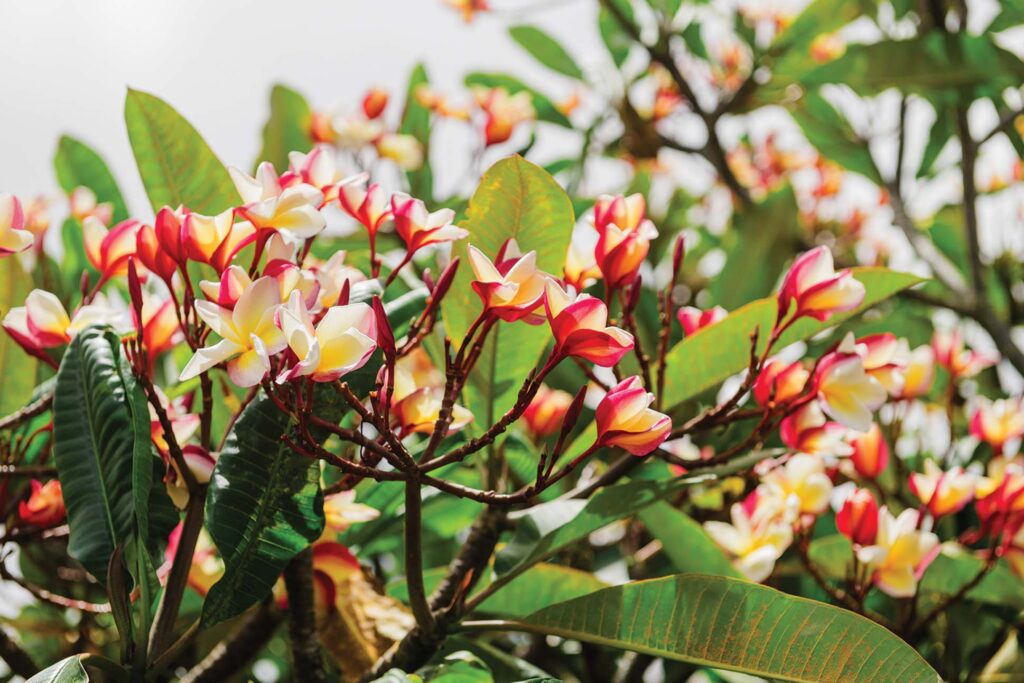
The tour wraps up with a period of free time to pick flowers, peruse the gift shop, and relax in the shade. Soon the group will head back down the dusty dirt road, leaving behind the rich red earth and heady scent of plumeria. They will depart with a bag of flowers, maybe a candle from the gift shop, and a new appreciation for a flower they thought they knew. But for now, the group chats idly, taking in the singular beauty of their surroundings.


